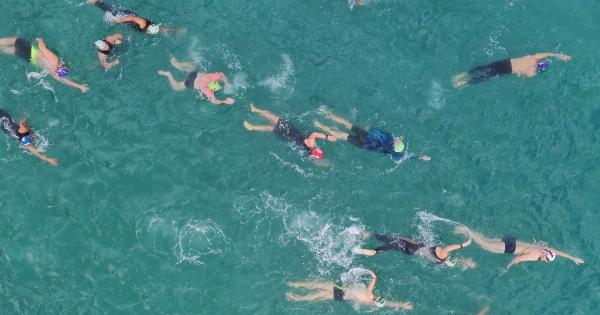Alzheimer’s disease is a debilitating condition marked by the slow but steady deterioration of cognitive function.
It is characterized by the build-up of amyloid-beta plaques and tau protein tangles in the brain, which interfere with the transmission of messages between neurons. This results in memory loss, confusion, difficulty with language, and other cognitive impairments.
The Prevalence of Alzheimer’s Disease in the General Population
According to the Alzheimer’s Association, approximately 5.8 million Americans are living with Alzheimer’s disease in 2021.
This number is expected to grow to 14 million by 2060, as the population ages and the risk of Alzheimer’s increases.
While Alzheimer’s disease can affect anyone, it is more commonly diagnosed in individuals over the age of 65.
In fact, one in ten adults over 65 years of age has Alzheimer’s disease, and the prevalence increases to one in three for adults over the age of 85.
The Link Between Alzheimer’s Disease and Former Athletes
Recent studies have suggested that former athletes may be at a higher risk of developing Alzheimer’s disease than the general population.
This is likely due to the repeated head injuries that many athletes sustain over their careers, which can result in traumatic brain injury (TBI) and chronic traumatic encephalopathy (CTE).
What is Chronic Traumatic Encephalopathy?
Chronic traumatic encephalopathy is a neurodegenerative disease that is caused by repeated head injuries. It is marked by the build-up of tau protein tangles in the brain, which interfere with the transmission of messages between neurons.
This results in cognitive impairment, including memory loss, confusion, and difficulty with language.
CTE was first widely recognized in professional football players, but it has since been identified in athletes in other sports, including soccer, wrestling, and boxing.
Symptoms of CTE usually do not appear until many years after the injuries occur, making it difficult to diagnose or treat the disease in its early stages.
The Symptoms of Alzheimer’s Disease and CTE
While the symptoms of Alzheimer’s disease and CTE are similar, there are a few key differences. Alzheimer’s disease usually progresses slowly, while the progression of CTE may be more rapid.
In addition, CTE symptoms often include changes in mood and behavior, such as depression, irritability, and impulsivity.
Unfortunately, there is no cure for Alzheimer’s disease or CTE. Treatment options are limited to managing symptoms and improving quality of life for patients.
The Role of Genetics and Lifestyle Factors in Alzheimer’s Disease
While repeated head injuries are a significant risk factor for Alzheimer’s disease and CTE, they are not the only factors that contribute to the development of these conditions. Genetics and lifestyle factors may also play a role.
Research has shown that certain genes increase the risk of developing Alzheimer’s disease, although this risk is not absolute.
In addition, lifestyle factors such as smoking, poor diet, and lack of exercise may increase the risk of developing Alzheimer’s disease.
The Importance of Early Detection and Prevention
Because there is no cure for Alzheimer’s disease or CTE, early detection and prevention are essential.
If you are a former athlete or have suffered from multiple head injuries, it is important to talk to your doctor about your risk of developing these conditions and what you can do to reduce that risk.
While there is no surefire way to prevent Alzheimer’s disease or CTE, there are steps you can take to reduce your risk.
These include eating a healthy diet, exercising regularly, getting plenty of sleep, and avoiding activities that could result in head injury.
The Future of Alzheimer’s Disease and CTE Research
Research into the causes, prevention, and treatment of Alzheimer’s disease and CTE is ongoing. Scientists are studying the genetics of these conditions, as well as the brain changes that occur over time.
New drugs are being developed that may slow or even prevent the progression of Alzheimer’s disease.
In addition, researchers are investigating new methods for detecting CTE in living patients, as well as ways to treat the condition more effectively.
Conclusion
Alzheimer’s disease and CTE are devastating conditions that can have a profound impact on the lives of patients and their families.
While the link between repeated head injuries and these conditions is still being studied, it is clear that former athletes may be at a higher risk of developing them.
It is important to be aware of the risk factors for Alzheimer’s disease and CTE, and to take steps to reduce your risk.
This includes talking to your doctor about your risk if you are a former athlete, eating a healthy diet, getting regular exercise, and avoiding activities that could result in head injury.






























